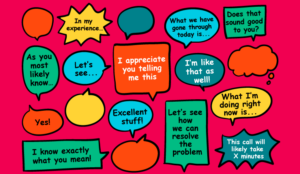Diabolocom discusses two scenarios that customers hate to encounter when calling up the contact centre, sharing their advice for how to avoid them.
From simple information requests to complaints, customers have a thousand reasons to call a company’s contact centre.
Many will choose the phone, rather than email, for example, because they see this channel as the fastest and most convenient way to get the information, the resolution, or the advice they desire. Nevertheless, there are two very common situations that all customers who call a contact centre hate above all else.
So, without further ado, here are the two situations and some tips for eliminating, or at least minimising, these major irritants in your own contact centre.
Situation #1 – Waiting to Speak to an Advisor
In all customer surveys, lengthy wait time before speaking with an advisor is the number-one cause of dissatisfaction.
Waiting for more than 3 or 4 minutes can cause customers to give up or at least become frustrated. Simple solutions such as automatically announcing the estimated waiting time will help to manage expectation and reduce impatience.
If the wait seems too long, some will choose to renew their call, others will continue to wait. For their sake, it is important to make sure that the estimated waiting time is accurate.
It is often said that customers have become too impatient or too demanding. There is no question: for them, the phone is the channel of immediacy, and from the moment the contact centre is open, they expect you to answer them within a minute.
The difficulty for you as the contact centre manager is to satisfy this demand in all circumstances, providing responses whatever the volume of incoming calls at that moment.
In order to control the wait time imposed on customers, you must always have the number of agents necessary to absorb the flow.
Of course, this can be complicated in the case of an unforeseen event provoking a peak of calls, for example a natural disaster if you are an insurer, or a product recall for safety reasons if you are in the food industry. But apart from these exceptional situations, your interaction management software provides you with all the elements you need to predict the number of agents required at different hours of an “ordinary” day.
Statistics from your system will reveal the number of incoming calls, the average waiting time, the busiest time slots and the average duration of a call. From these, you can easily calculate how many agents must be present to respond as quickly as possible at different time periods.
The past-activity analysis also allows you to adjust the workforce to cope with predictable peaks. For example, if promotions consistently increase traffic by 15% or 20% for two days, you can mobilise additional agents whenever marketing announces this type of campaign.
By taking full advantage of your activity statistics, you can ensure the number of agents is in line with the predictable traffic and significantly reduce the risk of slippage on wait times.
Situation #2 – IVR Menus Which Are Too Long or Too Complicated
If you ask your customers, they will probably tell you that they do not like dealing with an interactive voice server and that they find it frustrating and impersonal – especially when none of the options seems to match their problem.
If you probe a little deeper, chances are the customer recognises that this pre-qualification via IVR is useful and puts them directly in contact with the right advisor.
For contact centre managers, the challenge is to design simple IVR paths that always create a positive experience for customers. Beyond five initial choices, your customer will be lost. Anything above three action choices and customers may become frustrated.
To avoid endless menus, modern contact centre solutions allow you to associate other channels with your IVR and offer more intuitive options without blanketing it under the familiar “type 1” or “type 2” routes.
With today’s advanced solutions it is possible to configure an IVR route without need for specialised technicians. This means that it is far easier for contact centres to modify an existing menu which no longer supports their purpose, and also to create specialised or temporary IVRs which give customers greater control.
Indeed, since the majority of your customers are now calling from a smartphone, the IVR can offer to switch them to email or send their request by SMS if the waiting time to speak to a consultant is too high.
Also, you can refer them to self-service tools or a voicebot service. For example, if a significant portion of calls are for order tracking or delivery, these requests can be handled automatically in 100% voice mode on either side without need for agent intervention.
Speech recognition and voice synthesis have made tremendous progress and employing this technology for your customers will undoubtedly raise customer satisfaction, as they can access the information they need even outside of the contact centre’s opening hours.
Also, your agents will likely benefit since the services offered by your IVR will free them from most of these requests where they do not really have much added value.
Still, it is worth giving customers the option to speak with a human agent at all levels of the interaction and in all branches of the IVR system, even if this requires a little waiting time.
Author: Robyn Coppell
Published On: 2nd May 2019 - Last modified: 6th Jun 2023
Read more about - Guest Blogs, Diabolocom





































